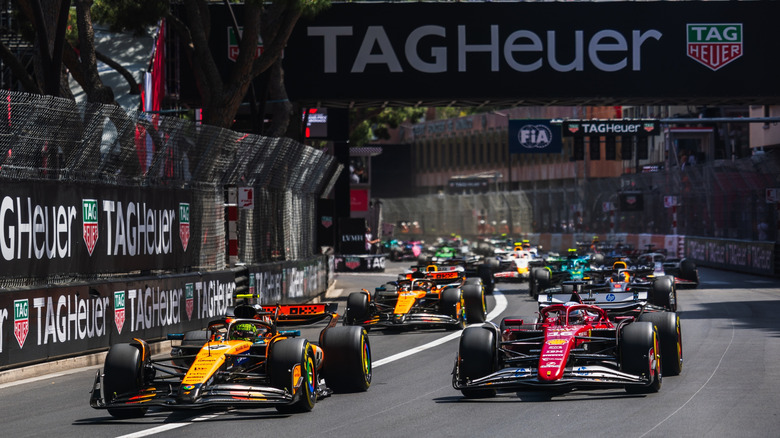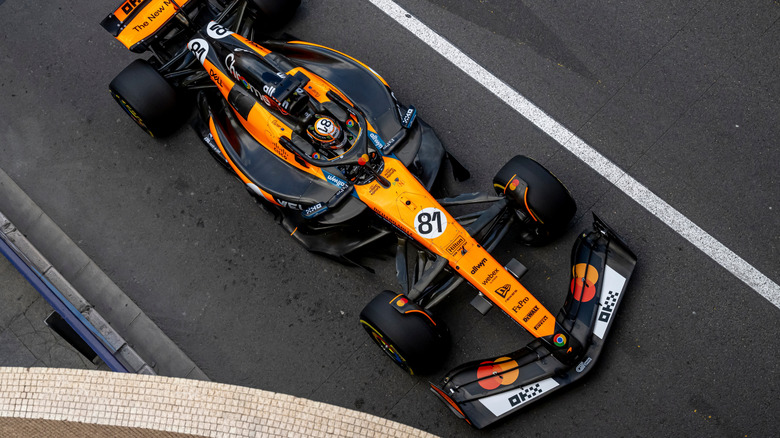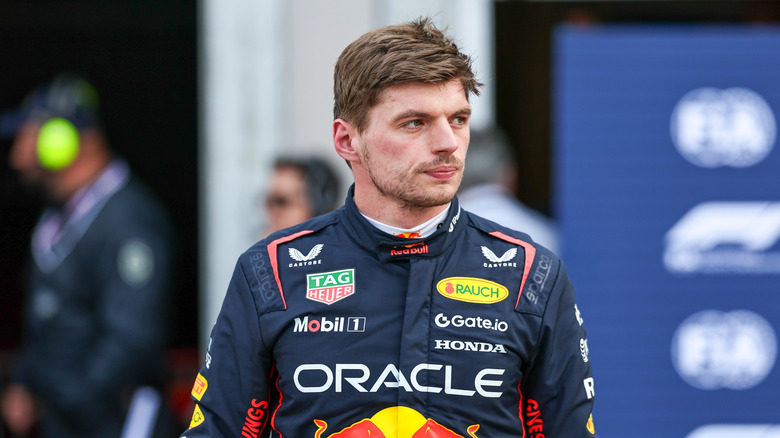What Makes The Monaco Grand Prix Circuit The Hardest F1 Track To Race On?
To Formula 1 fans, Monaco has always represented something special. The complex street track featured in the initial 1950 season and, with exception given only to the pandemic-shortened 2020 season, it's been a fixture every single year since 1955. While other street tracks do exist, watching these 200-MPH+ F1 cars dart around 11th-century chapels and world-renowned casinos is an experience that cannot be matched at any of the other venues on the F1 calendar. Furthermore, even when the race is said and done, Monaco offers an atmosphere like no other place, with ultra-luxury yachts, boutique shopping experiences, and supercars so exotic that by the time the weekend is over, a red Ferrari will seem as ubiquitous as a silver Camry.
However, while the historic importance of the F1 track and location is hard to argue against, the venue does pose some difficulties when it comes to hosting modern F1 races. First and foremost, it's a tight and technical track, and there's next to no run-off zones. On one side is a harbor, and on the other are rows of buildings, so there's literally no room for error. Therein lies the main issue — not only is there no room for error, there's simply no room. Modern F1 cars are over two feet wider than the first racers that tore around the track, and this makes overtaking an almost impossible task. In the 2023 Monaco Grand Prix, there were zero on-track overtakes, which shows just how tough it can be to race on the narrow streets of Monaco.
Monaco is getting increasingly more difficult to race at
It's evident that Monaco's streets aren't going to get any wider, but what's making the problem more and more prevalent is that F1 regulations are allowing the cars to get wider and longer. The current cars check in at over 6.5 feet wide, and almost 12 feet long, and while the cars that will adorn the 2026 grid are going to be a touch smaller due to a change in regulations, they're still going to be way too large for exciting racing on Monaco's narrow streets.
This has led to F1 organizers having to think outside the box in order to try and feed a little more action into the historic Monaco Grand Prix. For instance, this year it was announced that all drivers would have to run at least three sets of tires during the race, which in effect forces each driver to pit twice, rather than just once. While this won't improve on-track racing, organizers hoped it would have led to differing strategies, which would spice up the action somewhat. The two-stop experiment was ultimately a failure, though, with most cars choosing to pit roughly at the same time as one another, following the same strategy, and thus resulting in very little position change. Throughout the entire race, Lance Stroll taking Nico Hulkenberg on the final lap was the only legal on-track overtake, with a frustrated George Russell dive-bombing the chicane past Charles Leclerc being the only other notable highlight.
What drivers have to say, and what the solution could be
Everyone who watches F1 has an opinion on it, and fans will never agree with one another. Some still think that Monaco has its place on the F1 calendar, while others will believe it's simply too small and no longer fit for purpose. Rather than trying to work out which camp you belong to, perhaps it'll be more beneficial to listen to the opinions of drivers instead.
ESPN has collated a number of quotes from drivers, including the current World Champion Max Verstappen, who believes they simply cannot race there. He has a point, as during the 2025 race, even with shredded tires and losing seconds per lap, the speedier McLarens couldn't work their way past. George Russell agrees, and while he appreciates that the FIA tried to spice the action up a little with an extra pit stop, he states that "clearly it did not work at all" — a sentiment also shared by race-winner Lando Norris.
Carlos Sainz was stuck in a train of drivers being held up, and had time to think of a solution — banning the purposefully leisurely pace of drivers looking to slow the field was all he could come up with. Team boss James Vowles suggested a minimum lap time would help, and it's a practice already employed in qualifying conditions for safety concerns. Either way, the legendary track might one day find itself on the F1 chopping block if organizers don't think of something.


